Publications
The State of the World
FAO’s State of the World collection comprises the Organization’s flagship reports. Published annually or biennially, these are data-rich and analytically complex publications: they provide a global snapshot of topics associated with food and agriculture.
The collection is increasingly structured to gauge progress towards the goals and targets of the 2030 Agenda for Sustainable Development. It is aimed at policymakers; donors; international organizations; academia; and journalists and researchers specializing in food security, agrifood systems, the environment and international development.
.jpg?sfvrsn=3af6eee4_2)
The State of Food Security and Nutrition in the World
Urbanization, agrifood systems transformation and healthy diets

The State of Food and Agriculture
Revealing the true cost of food to transform agrifood systems

The State of Fisheries and Aquaculture
Blue Transformation in action

The State of the World's Forests
Forest pathways for green recovery
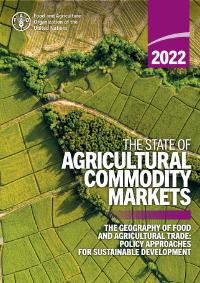
The State of Agricultural Commodity Markets
The geography of food and agricultural trade
The Impact of Disasters on Agriculture and Food Security
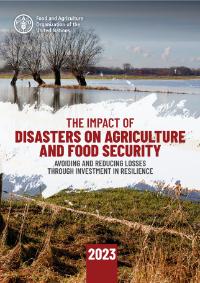
The Impact of Disasters on Agriculture and Food Security
Avoiding and reducing losses through investment in resilience
This biennial report puts numbers on the losses that disasters – ever more frequent and intense in recent years – have produced in global agriculture. It also outlines strategies to reduce disaster-related risk in the sector.
Recent Publications
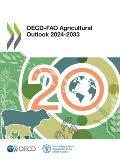
OECD-FAO Agricultural Outlook 2024-2033
07/2024
The Agricultural Outlook 2024-2033 is a collaborative effort of the Organisation for Economic Co-operation and Development (OECD) and the Food and Agriculture Organization (FAO) of the United Nations. It brings together the commodity, policy and country expertise of both organisations as well as input from collaborating member countries to provide an annual assessment of the prospects for the coming decade of national, regional and global agricultural commodity markets.
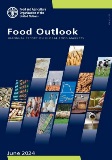
Food Outlook | Biannual Report on Global Food Markets - June 2024
06/2024
Food Outlook a biannual publication focusing on developments affecting global food and feed markets.
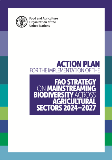
Action Plan for the implementation of the FAO Strategy on Mainstreaming Biodiversity Across Agricultural Sectors 2024–2027
04/2024
The Action Plan for the implementation of the FAO Strategy on Mainstreaming Biodiversity Across Agricultural Sectors 2024–2027 sets out the concrete actions through which FAO is operationalizing the strategy.
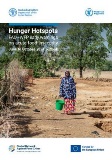
Hunger Hotspots: FAO-WFP early warnings on acute food insecurity (June-October 2024)
06/2024
In the current edition of a regular joint bi-yearly report, the Food and Agriculture Organization of the United Nations (FAO) and the World Food Programme (WFP)warn that acute food insecurity is likely to deteriorate further in 18 hunger hotspots, including a total of 17 countries or territories and one regional cluster which comprises 4 countries, during the outlook period from June to October 2024.
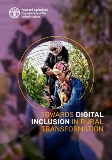
Towards digital inclusion in rural transformation
06/2024
Rural residents and marginalized groups have the most to gain from digitalization but are also the most at risk of falling further behind due to digital divides. This report helps rural development practitioners and decision-makers work through this paradox. It does so by highlighting the factors that lead to digital exclusion, providing evidence regarding how digital divides play out, and providing recommendations on how to improve digital inclusion for rural areas and marginalized groups.
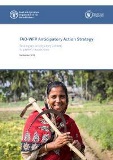
FAO-WFP Anticipatory Action Strategy
09/2023
Recognizing that the increasing number of food crises require resources and capacities far beyond the reach of any individual organization, the Food and Agriculture Organization of the United Nations (FAO) and the World Food Programme (WFP) are partnering together to scale up the reach of Anticipatory Action. This means acting ahead of predicted hazards to mitigate acute humanitarian impacts before they fully unfold. The two agencies are committed to further strengthening collaboration on selected strategic...
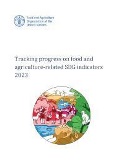
Tracking progress on food and agriculture-related SDG indicators 2023
09/2023
At the mid-point of the Agenda 2030 for Sustainable Development, there is an urgent need to understand where the world stands in eliminating hunger and food insecurity, as well as in ensuring sustainable agriculture. The new report of the Food and Agriculture Organization of the United Nations (FAO), titled Tracking progress on food and agriculture-related SDG indicators, offers analysis and trends on indicators across eight Sustainable Development Goals (SDGs) – in particular, SDGs 1,...
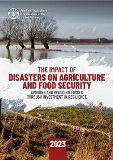
The Impact of Disasters on Agriculture and Food Security 2023 - Avoiding and reducing losses through investment in resilience
11/2023
Disasters are resulting in unprecedented levels of destruction across the world. These shocks and disruptions affect the functioning and sustainability of agricultural production and threaten the livelihoods of millions of people reliant on agrifood systems. Reducing the impact of disasters in agriculture requires a better understanding of the extent to which these events produce negative impacts in agriculture and necessitates an investigation into the underlying risks that make agriculture vulnerable to the effects of disasters. The...

The State of Food and Agriculture 2023: Revealing the true cost of food to transform agrifood systems
11/2023
Agrifood systems generate significant benefits to society, including the food that nourishes us and jobs and livelihoods for over a billion people. However, their negative impacts due to unsustainable business-as-usual activities and practices are contributing to climate change, natural resource degradation and the unaffordability of healthy diets. Addressing these negative impacts is challenging, because people, businesses, governments and other stakeholders lack a complete picture of how their activities affect economic, social and environmental sustainability...

El Niño: Anticipatory Action and Response Plan, October 2023–March 2024
11/2023
The latest forecasts point to a greater than 80 percent chance of El Niño continuing through March–May 2024, following declaration of the onset of El Niño conditions in early July 2023 by the World Meteorological Organization. The strength is expected to be comparable to the top six strongest events in recorded history, increasing the likelihood of extreme weather and climate hazards, ranging from drought to floods and storms. By disrupting rainfall and temperature patterns,...
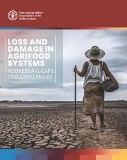
Loss and damage and agrifood systems: Addressing gaps and challenges
12/2023
The purpose of this report is to stimulate discussions on the central role of agrifood systems in the loss and damage debate and identify the gaps in data, knowledge and finance that need to be addressed. The report provides an overview of the loss and damage concept, the status of analytical methodologies and tools, a summary of the reporting on loss and damage in nationally determined contributions (NDCs), an outline of the policy needs...
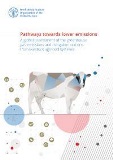
Pathways towards lower emissions: A global assessment of the greenhouse gas emissions and mitigation options from livestock agrifood systems
12/2023
This FAO report presents a comprehensive global assessment of greenhouse gas emissions from livestock systems, utilizing FAO’s Global Livestock Environmental Assessment Model (GLEAM) based on the most recent available data. GLEAM also considers indirect emissions from upstream activities, such as feed and other inputs, and part of the downstream processes including post-farm transport, processing and packaging of raw products. Drawing from an extensive literature review, this publication illustrates pathways towards lower emissions through a...

Achieving SDG2 without breaching the 1.5C threshold: A Global Roadmap
12/2023
Unveiled at the United Nations Climate Conference COP28, the Global Roadmap for Achieving Sustainable Development Goal 2 (SDG2) without Breaching the 1.5°C Threshold outlines a comprehensive strategy spanning the next three years that encompasses a diverse portfolio of solutions across ten distinct domains of action. The roadmap calls for a transformative shift in agrifood systems. It challenges the prevailing narrative that increasing production is synonymous with higher emissions and environmental degradation. Instead, it emphasizes the opportunity within agrifood...
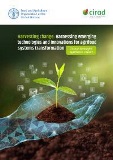
Harvesting change: Harnessing emerging technologies and innovations for agrifood system transformation
12/2023
The study assesses a selection of technologies and innovations, which potentially could be of paramount importance in addressing agrifood challenges until 2050, as well as the most important trends and drivers that will influence the emergence of agrifood technologies and innovations and their triggers of change, including some regional aspects. The goal is also to build plausible future scenarios for the evolvement of the emerging technologies and innovations in the future with the time...
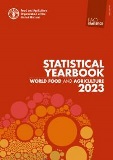
World Food and Agriculture – Statistical Yearbook 2023
12/2023
This publication offers a synthesis of the major factors at play in the global food and agricultural landscape. Statistics are presented in four thematic chapters, covering the economic importance of agricultural activities, inputs, outputs and factors of production, their implications for food security and nutrition and their impacts on the environment. The Yearbook is meant to constitute a primary tool for policymakers, researchers and analysts, as well as the general public interested in the...

Tackling antimicrobial resistance in food and agriculture
02/2024
This first report on FAO’s contribution to the global response to AMR outlines a wide range of activities undertaken by FAO at global, regional and country level. This report: describes FAO’s role in the global governance of AMR; provides an overview of progress on implementing national action plans on AMR in agrifood systems; and flags key challenges and opportunities related to AMR in the food and agriculture sectors.
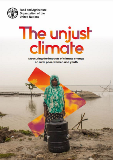
The unjust climate: Measuring the impacts of climate change on rural poor, women and youth
03/2024
Developing policies to foster inclusive rural transformation processes requires better evidence on how climate change is affecting the livelihoods and economic behaviours of vulnerable rural people, including women, youths and people living in poverty. In particular, there is little comparative, multi-country and multi-region evidence to understand how exposure to weather shocks and climate change affects the drivers of rural transformation and adaptive actions across different segments of rural societies and in different agro-ecological contexts....
